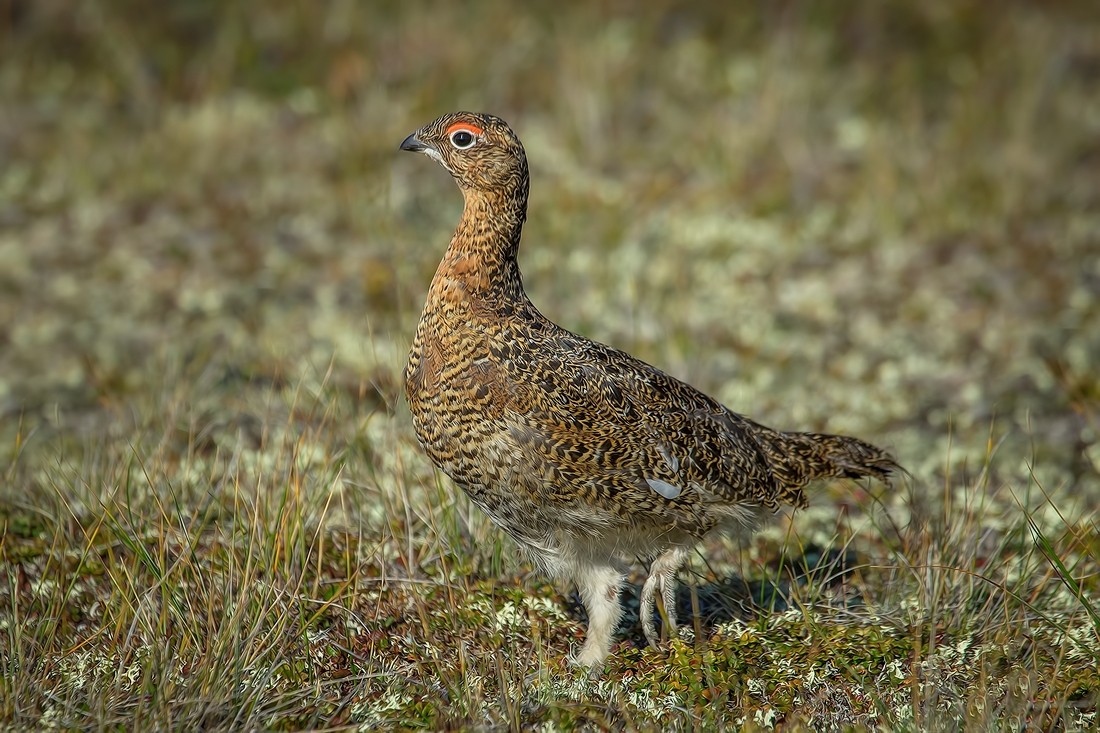Willow Ptarmigan
A species of Ptarmigans, Also known as Willow Grouse Scientific name : Lagopus lagopus Genus : Ptarmigans
Willow Ptarmigan, A species of Ptarmigans
Also known as:
Willow Grouse
Botanical name: Lagopus lagopus
Genus: Ptarmigans
Content
Description People often ask General Info
 Photo By Alan D. Wilson , used under CC-BY-SA-3.0 /Cropped and compressed from original
Photo By Alan D. Wilson , used under CC-BY-SA-3.0 /Cropped and compressed from original Description
The willow ptarmigan is a medium to large ground-dwelling bird and is the most numerous of the three species of ptarmigan. Males and females are about the same size, the adult length varying between 35 and 44 centimetres (14 and 17 in) with a wingspan ranging from 60 and 65 centimetres (24 and 26 in). The weight is 430 to 810 grams (15 to 29 oz). It is deep-chested and has a fairly long neck, a broad bill, short feathered legs and a moderately short rounded tail. In the summer, the male's plumage is marbled brown, with a reddish hue to the neck and breast, a black tail and white wings and underparts. It has two inconspicuous wattles above the eyes, which become red and prominent in the breeding season. The female is similar in appearance but lacks the wattles and has brown feathers scattered among the white feathers on the belly. During winter, the plumage of both sexes becomes completely white, except for some black feathers in the tail. Immature birds resemble the adults. The willow ptarmigan can be distinguished from the closely related rock ptarmigan (Lagopus muta) by its larger size and thicker bill and by the fact that it is not generally found above the tree line while the rock ptarmigan prefers more elevated, barren habitat. The summer plumage is browner and in the winter, the male willow ptarmigan lacks the rock ptarmigan's black stripe between the eyes and bill. The white-tailed ptarmigan (Lagopus leucura) in North America is smaller, has a white tail and finely-barred greyer plumage and lives permanently above the tree line. The distinctive British Isles subspecies L. l. scoticus (red grouse) was once considered a separate true British species but is now classified as a sub-species. This moorland bird is reddish brown all over, except for its white feet. The voice is low-pitched and guttural and includes chuckles, repeated clucking sounds, expostulations. When displaying, the male makes rattles and barking noises. 
Size
38 - 43 cm
Colors
Brown
Gray
White
Life Expectancy
1-7 years
Nest Placement
Ground
Clutch Size
4 - 14 eggs
Incubation Period
1 brood
Number of Broods
21 - 23 days
Feeding Habits
Willow Ptarmigan primarily consume plant materials like willow, catkins, buds, berries, and leaves, supplemented with insects in summer. Foraging occurs post-sunrise and late afternoon, with young mainly eating plants, but juveniles initially feed on insects. Snow affects their dietary range, with shrub expansion influencing winter feeding.
Habitat
Willow Ptarmigan are primarily found in subarctic and subalpine zones with a preference for moist, flat terrain below 6,000 feet during breeding. Their habitats include sparse pine and birch forests along with willow, alder thickets, and heather moors. In terms of vegetation, they favor shrubby areas with plants like willow, birch, spruce, fir, crowberry, and blueberry. Family groups often forage near streams or marsh edges. Post-breeding, some populations migrate to drier, higher altitudes above 6,000 feet or southward into boreal forests for winter, with variation in these patterns across their range.
Nest Behavior
Willow Ptarmigan females select the site and construct nests in spring. Egg-laying typically follows, with attentive incubation and protection of young by both parents post-hatching.
Nest Characteristics
Willow Ptarmigan nests are ground-based, hidden among shrub thickets, with overhanging vegetation for concealment. These nests are lined with moss, grass, leaves, and feathers, measuring about 7 inches wide and 4.7 inches deep.
Dite type
Herbivorous
People often ask
General Info
Feeding Habits
Bird food type
Sounds
Call
Recording location: United States
Call
Recording location: United States
Behavior
Willow Ptarmigan exhibit distinct daily activities and behaviors, particularly in their territorial and mating customs. Males establish and fiercely protect territories, varying in size, to attract females with elaborate courtship displays including tail fanning, wing spreading, and red eye-comb presentation. Mating pairs may remain together for up to 7 months, a rare trait among grouse, with males actively participating in guarding during incubation and chick rearing. Females solely handle incubation, often within segments of the male's territory. Post-fledging, willow Ptarmigan may migrate upslope for molting, later returning or moving to winter habitats as seasonal conditions dictate. Notably, willow Ptarmigan often demonstrate mate fidelity, reuniting in subsequent breeding seasons.
Distribution Area
The willow ptarmigan has a circum-boreal distribution. It is native to Canada and the United States, China, Mongolia, the Russian Federation, Kazakhstan, the Czech Republic, Finland, Norway, Sweden, Estonia, Latvia, Lithuania, Germany, the United Kingdom, Ireland and Spain. It primarily occupies subalpine and subarctic habitats such as sparse pine and birch forests, thickets with willow and alder trees, heather moors, tundra and mountain slopes. In the winter, females and sub-adults may move to lower altitudes and seek shelter in valleys or in more densely vegetated areas, but adult males usually remain in the subalpine region. The red grouse is common on heather-clad moorland across the north and west of Great Britain and in localised areas of Ireland. 
Species Status
Not globally threatened.